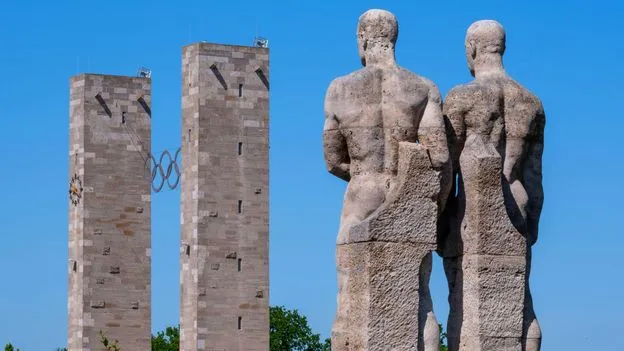Italy still exhibits Fascist monuments
Italy still exhibits Fascist monuments

What happens to fascist architecture after fascism?

(Mirror.)
In Italy, the EUR district in Rome was conceived by Mussolini as an architectural celebration of fascism. Wandering its eerie landscape, you come across the Palazzo della Civiltà Italiana, whose façade is emblazoned with a quotation taken from Mussolini's speech announcing the invasion of Ethiopia. Just north of Rome's city centre lies the Foro Italico sports complex, whose entrance features a 17.5m-tall obelisk with the words MUSSOLINI DUX carved into it. Inside the Foro Italico hangs The Apotheosis of Fascism, a painting depicting Mussolini as a kind of God-Emperor. It was covered up by the Allies in 1944 for being too grotesque, and then uncovered by the Italian government in 1996.
Further reading: Why Are So Many Fascist Monuments Still Standing in Italy?
[…] the Allied Control Commission’s bulletins and reports instead recommended that only the most obvious and “unaesthetic” monuments and decorations, like busts of Mussolini, be destroyed; the rest could be moved to museums, or simply be covered up with cloth and plywood.
Row over fascist-era statue reveals schism in how Italians deal with past